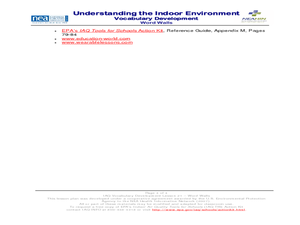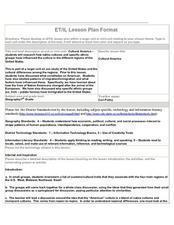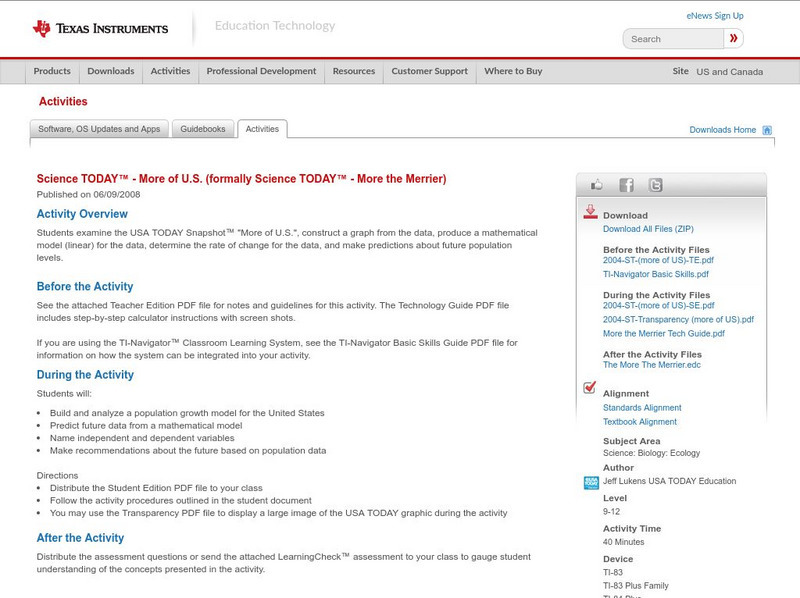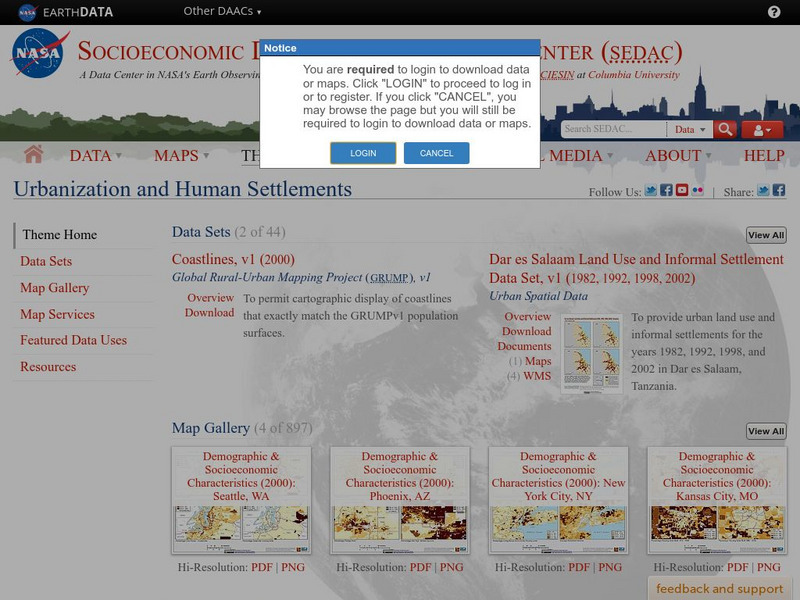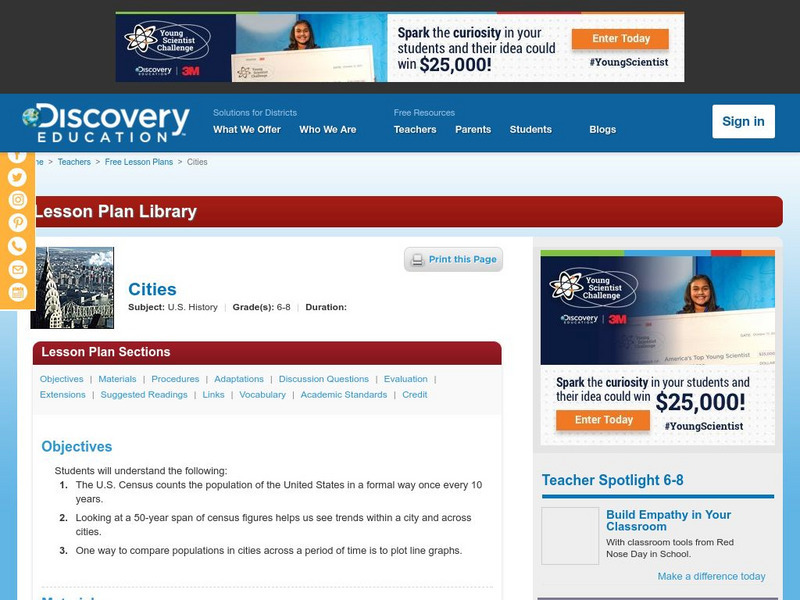Curated OER
Indoor Air Quality
Students make a work puzzle using air quality vocabulary. In this air quality vocabulary lesson, students design a word puzzle using a teacher designated number of vocabulary words. They peer edit the puzzles with their classmates.
Curated OER
Understanding the Indoor Environment: Word Walls
Students study vocabulary words about indoor air quality. In this indoor environment lesson, students create a word wall with vocabulary words about indoor air quality and pollutants.
Curated OER
Understanding the Problems of World Hunger
Young scholars explore the issue of world hunger. They examine hunger on a personal level and explore what it means to be hungry or starving. They discuss the causes of hunger and the effects of hunger on nations.
Curated OER
Turtle Hurdles
Students participate in a simulation in which they discover the threats to sea turtles throughout the world. In groups, they act out the life cycle of a sea turtle and describe the stresses that threaten their survival. As a class,...
Curated OER
Bats
Pupils examine the migration patterns of the long-nosed bat. They identify threats to the animal and the plants bats help pollinate. They participate in a game to help them with the information.
Curated OER
What is Migration
Students conduct individual research and participate in discussion be able to identify difference between forced and voluntary migration. They identify if push and pull factors are caused by political, social, economic, or environmental...
National First Ladies' Library
Pandemics: The Swine Flu of 1918
Learners study pandemics through the investigational research of the 1918 swine flu. They apply the information by choosing a current virus and role-playing a member of the Centers of Disease Control (CDC).
Curated OER
Making Sense of the Census
In this unit of lessons, young scholars make sense of the census. They examine why a census is taken and participate in activities.
Curated OER
Images of Gary: An Ideal Place to Live?
Students examine photographs depicting historical scenes from the US Steel Photograph Collection. They develop criteria to analyze or judge an image's representation. They assess photographs according to the criteria.
Curated OER
On the Road Again": Moving People, Products, and Ideas
For this lesson learners learn how to identify modes of transportation and communication for moving people, products, and ideas from place to place. Students also study the advantages and disadvantages of different modes of...
Curated OER
Letters from the Japanese American Internment
Students make deductions about life in an internment camp by reading and comparing letters written to Clara Breed. Along the way, they consider the advantages of looking at a historical event from the multiple points of view of...
Curated OER
Cultural America
Seventh graders investigate the cultural differences that can be found in America. They discuss what it means to be called an American. The patterns of migration to America are discussed with the use of maps and geographical terms....
Curated OER
International Summit on Asia
Students consider different aspects of Asia to determine which Asian country they think would be the best location for the American business development. They engage in a series of lessons designed to examine regions of Asia,...
US Department of State
U.s. Dept. Of State: 2018 Country Reports on Human Rights Practices: Spain
The 2018 report on human rights practices in Spain includes information on topics of concern related to human rights such as government corruption; violence against women, children, persons with disabilities, and national/racial/ethnic...
Texas Instruments
Texas Instruments: Science Today More of u.s.
Students examine the USA TODAY Snapshot "More of U.S.", construct a graph from the data, produce a mathematical model (linear) for the data, determine the rate of change for the data, and make predictions about future population levels.
Columbia University
Nasa: Sedac: Urbanization and Human Settlements
[Free Registration/Login Required] A collection of twenty data sets from SEDAC (Socioeconomic Data and Applications Center) that examine urbanization in major metropolitan areas of the United States in the late 20th and the early 21st...
Center for Innovation in Engineering and Science Education, Stevens Institute of Technology
Ciese: Population Growth Project
In this collection of nine lessons, learners use data from the U.S. Census to create population growth models and to examine the impact of changes in population factors such as age, demographic, etc.
US Department of State
America.gov: Foundations of Human Activity
An excellent overview of the immigration activity and subsequent settlement patterns of the United States. Discusses major reasons for population shifts and growth of population centers.
NBC
Msnbc: u.n. Body Rebukes u.s. Over Katrina Response
The United Nations human rights panel chastised the United States for its poor response to Hurricane Katrina. It found that there was a disproportionate number of poor and African-Americans who were not protected by the United States...
Remedy Health Media
The Body: Human Immunodeficiency Virus Type 2
A very good summary of what we know about a second strain of HIV and its appearance in the population. Original resource from 2007 U. S. Center for Disease Control and Prevention.
Discovery Education
Discovery Education: Cities
This lesson plan shows that by studying the population of the U.S. through census figures, students can learn about interesting cultural and economic trends.
Discovery Education
Discovery Education: African American Population Shifts
After completing this mini-unit, students will understand some of the economic, educational, and lifestyle reasons why African Americans have moved from one place in the United States to another.
PBS
Pbs: American Experience: Mass Exodus From the Plains
This site is from PBS.org explaining the migration of people out of the plains during the dust bowl. Use this article to learn all about the reasons people left and where they went.
National Endowment for the Humanities
Neh: Edsit Ement: Mapping Our Worlds
In this instructional activity, introduce your learners to the world of maps and discover a world of information online. Students learn how to identify different types of maps, comparing maps to the rooms of a house.

